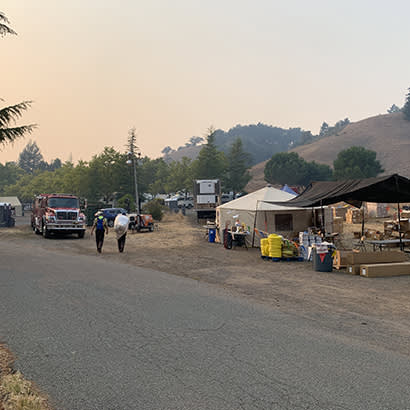
For an enhanced digital experience, read this story in the ezine.
Turn on the news, and there’s a good chance you’ll hear about a natural disaster striking a community somewhere in the United States. That’s because natural disasters are becoming more frequent and more severe as the climate crisis accelerates, and also because communities continue to develop areas vulnerable to climate-driven hazards. Data from the National Oceanic and Atmospheric Administration paint a stark picture. Billon-dollar disasters are increasing, and in 2021 alone, we experienced 20 such weather-related disasters, causing $145 billion in damages.
Parks can have a positive impact before, during and after a disaster strikes. Here are a few ways parks help reduce community vulnerability and improve resilience.
Before disaster strikes: According to the Federal Emergency Management Agency (FEMA), on average, every $1 spent on natural hazard mitigation saves $6 in future disaster costs. FEMA’s new report, Building Community Resilience With Nature-Based Solutions, lays out a path for incorporating parks and other green spaces into hazard planning. Nature-based solutions, including specially designed parks, trails and green spaces, can reduce flooding, cool cities during dangerous heat waves, protect against wildfires and more.
Your town likely already has a hazard-mitigation plan that identifies the major threats to your community, along with strategies to reduce your vulnerability. As a practical step, find out who is leading your city’s hazard-mitigation or climate-adaptation plan and start a conversation about integrating parks into those efforts.
Parks also provide less tangible, but equally important, benefits. We know parks can help build social cohesion, which is a key ingredient to a community’s resilience. The way we design and program parks can help facilitate human interactions, create bonds between neighbors, and strengthen respect and trust among community members. During times of disaster, a strong social fabric could determine success or failure.
During a disaster: Depending on the type of disaster, parks can serve several different functions. For example, during a heat wave, parks with splash pads and adequate tree canopy provide a cooling oasis for residents who lack air conditioning. Going a step further, park departments can create designated “cooling centers” in publicly owned air-conditioned buildings, which is exactly what Burlington, Vermont, did during a dangerous heat wave this past summer. Parks also can serve as disaster response headquarters or distribution sites. During summer of 2020, firefighters battling the Woodward Fire in California established their Incident Command Post at the San Geronimo Commons — an old golf course that The Trust for Public Land and its partners turned into a publicly accessible park. The property has since been used to host coronavirus (COVID-19) testing and vaccination events, community blood drives and drive-thru food banks, among other activities.
After a disaster: If your community has flooded, been impacted by wildfire or experienced a prolonged heat wave or drought, there’s a decent chance it will happen again. After a disaster occurs, take stock of the damage and then assess how you can reduce your vulnerability the next time. Often that might mean replacing built infrastructure with parks and green spaces designed for future climate conditions. For example, back in 2002, Atlanta’s historic Vine City neighborhood suffered catastrophic flooding that damaged hundreds of homes. Instead of simply rebuilding, the community created a new vision for the neighborhood, anchored by a state-of-the-art park designed with green infrastructure that collects and manages 9 million gallons of stormwater. Created by The Trust for Public Land and City of Atlanta, Cook Park now protects 160 acres of adjacent property (and the residents who live there) from flooding.
There are many ways to incorporate parks or entire park systems into hazard-mitigation planning, response and recovery efforts. To learn more, see FEMA’s guide to nature-based solutions, which includes a more in-depth overview of planning processes, funding sources and other best practices.
Taj Schottland, is Associate Director, National Climate Program at The Trust for Public Land.

